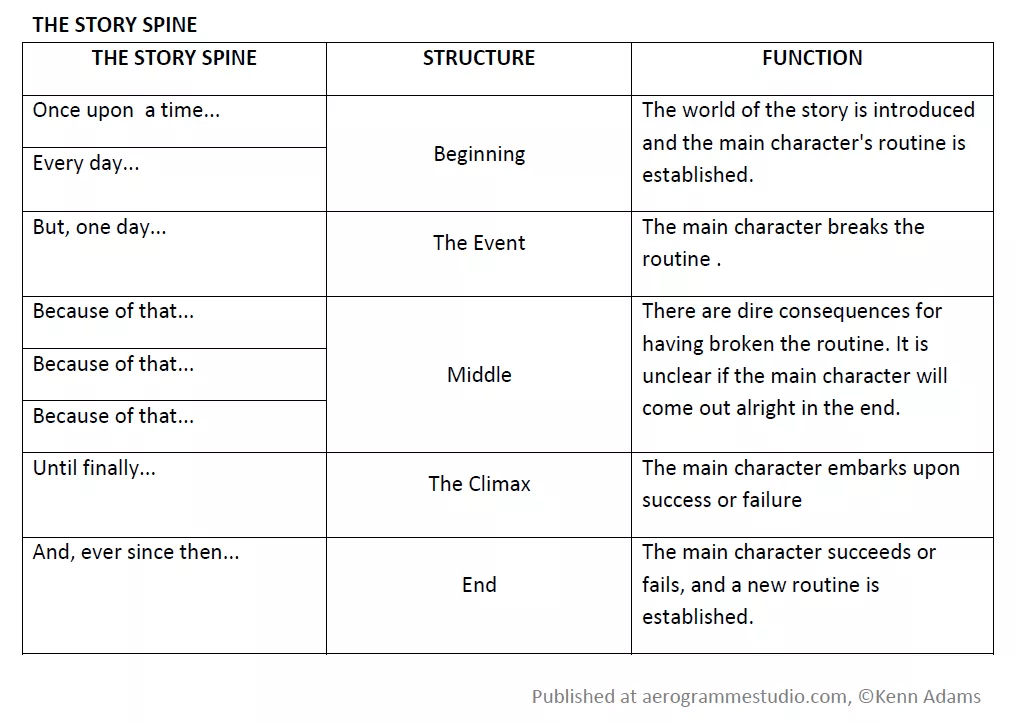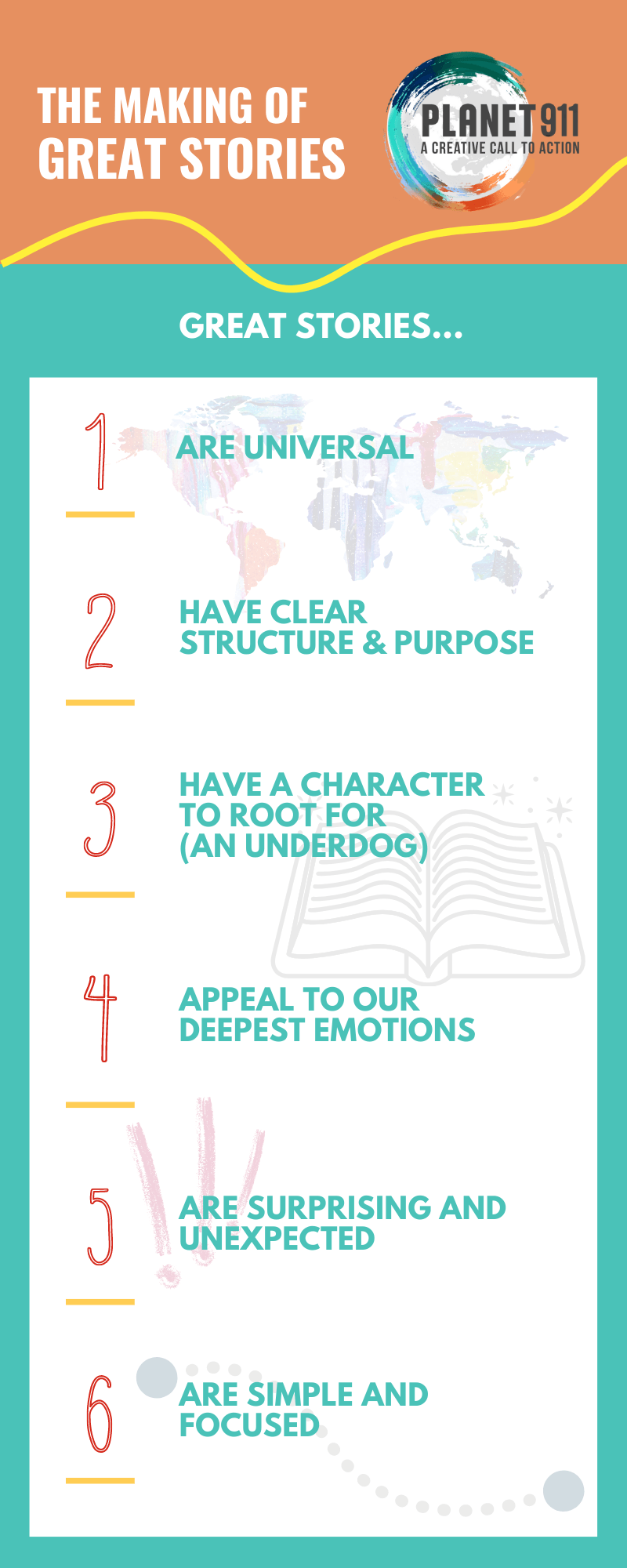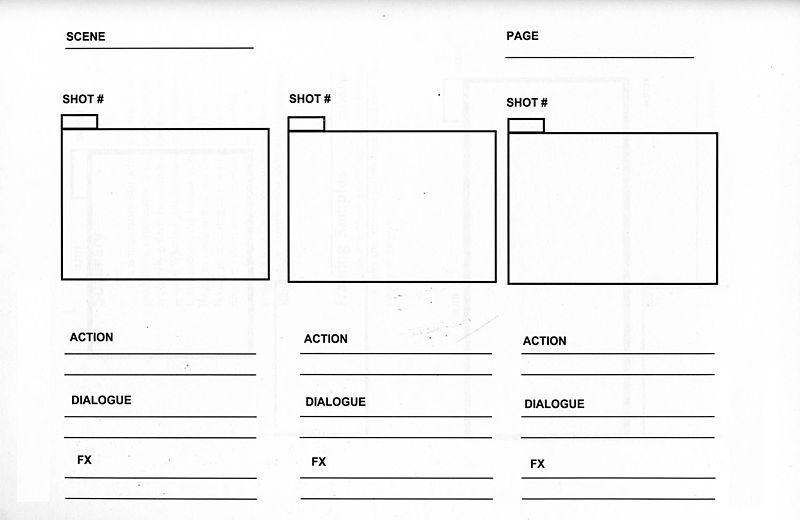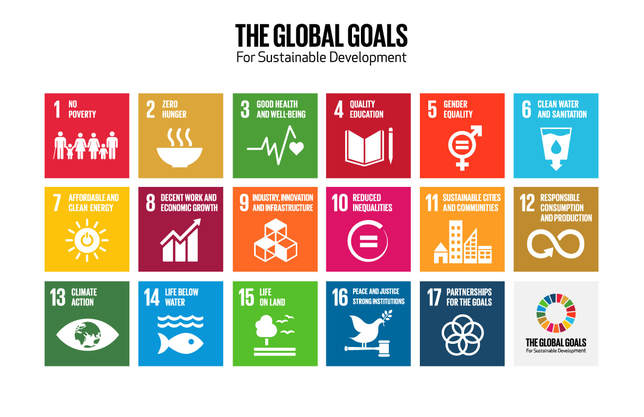The best films, no matter the genre, tell stories well. Film is storytelling with the bonus of images to help illustrate the points being made. It makes sense to spend time thinking and planning how to convey the message you want your audience to understand when they view your film entry.
No matter what your intended message is, you should begin to think about ‘unfolding it’ as in storytelling terms. Your film will naturally have a beginning, middle and end--so we have put together some resources for you to enhance your storytelling skills and to apply to your filmmaking efforts.
Dive into the toolkit. You can jump to each section using the links below. If you are ready to submit your film, click here.
I. Explore: "The Making of Great Stories"
II. Create: Tell a Story/Convey a message that no one can forget
III. Submit
Download PDF of the toolkit here.
3. Great stories have a character to root for (an underdog):
Who doesn’t want to root for the character with mountains to climb to reach the top?
4. Great stories appeal to our deepest emotions:
“No tears in the writer, no tears in the reader,” as the saying by poet Robert Frost goes. If you’re feeling it (whatever emotion you want to convey) when you write it, there’s a strong chance your readers will feel it too!
5. Great stories are surprising and unexpected:
Great stories aren’t boring. It’s the little things that can make for the biggest surprises, yo! Birds singing may not seem like a big deal. Birds singing in a war zone creates an image that feels loud.
6. Great stories are simple and focused:
K.I.S.S.= Keep It Simple, Silly! Don’t make your plotline so complicated that your reader gets trapped in a vortex. Great stories are easy to follow.
Want to keep Pixar’s Rules handy? Here ya go!
Sample Videos from Youth Climate Organizations
Here’s a great video to check out by Fridays for Future that uses simple and effective messaging. Talk about great storytelling.
An example of a message being effectively delivered through film without a traditional plot is this film about the demand for a Green New Deal made by The Sunrise Movement. Notice the excellent use of music and imagery.
Here’s an example of video that approaches the issue of fighting climate change like a Public Service Announcement (PSA). PSAs seek to motivate the audience to take action. Earth Guardians created this video to do just that.
For more resources about how to create a PSA style video, visit
the
Rock Your World curriculum.
Let's get down to it!
Think about your own stories regarding climate change and environmental justice. What do you need to tell? How are you going to tell it? If your story is super close to the heart, make it fictional. If you really just want to focus on the message and character development doesn’t really factor into your idea for the challenge, then keep the following pointers in mind from the creators of the blog on Film Creations, LTD:
Communicate Clearly
In order to convey a message in your video, you will want to make sure that you are able to communicate clearly. Writing a script or video outline will allow you to create specific topics that will be addressed through your video. Clear communication can also be achieved by dividing your video into three or more distinct segments.
Keep It Short
We have limited the films in this challenge to... This way, you can create a short, direct piece that holds the viewers attention. Your video will be more effective if it is kept short and direct. As you are planning out what type of message you would like for your video to deliver, it is a good idea to anticipate that your video will be no longer than three to five minutes.
Create Bold Graphics
A video message can be emphasized using bold graphics and headings. Your video production team will edit your video so that key points are introduced through text. Adding graphics to your video will also provide your film with a polished and professional look.
Storytellers often use their own lives, the experiences of friends, as well as use their understanding of the world for inspiration. Choices, choices, choices--great storytellers make lots of decisions. You might want to spend some time thinking through the following:
- What do you want to leave your audience thinking and feeling? Is there a moral or lesson that you’re trying to get across, or do you want to plant ideas for your audience to work out even after your film ends?
- How do you want your audience to feel as your film unfolds? What are you going to do to make the viewer feel deeply?
TELLING NARRATIVE STORIES
Narrative stories are going to work differently than message-only films for this challenge. Think about how your chosen form is going to get the job done. We’ve got you covered on this--read on!
Here are some questions to help you work out your plans for characters and conflict (the struggle or what needs to be overcome) since they’re at the heart of all stories!
- Who is/are the character(s) in your story? What are the roles of the heroes, the villains, the bystanders, or upstanders?
- Who will be telling the story? One (or more) of the characters? Or an outside narrator?
- What is the central conflict or problem of your story?
- How will that conflict be introduced?
- How will it be resolved--how will your story end?
Filmmakers often use storyboards to plan their stories. We think that storyboards are a great tool for any storyteller to organize and plan out their idea. See below for a sample.
Try using these storyboards that are provided in Rock Your World curriculum as you begin to plan your film:
We cannot wait to see your films and to ponder the stories and messages you believe are most important regarding our planet.
Thanks for sending us your creative responses and for taking part in the #Planet911 Film Challenge!
Gain some inspiration by exploring the Sustainable Development Goals (SDG)
What are the central issues that you want to address in your story or message? Your topic choices for entries this year have to do with environmental justice and voting for a sustainable future. A great way to gain deeper understanding of these topics is through the global goals, also known as the sustainable development goals (SDGs). Sustainability and environmental justice are at the very heart of the 17 goals.
Dive deeply in the Global Goals in order to collect details necessary for the crafting of your story and/or message!







